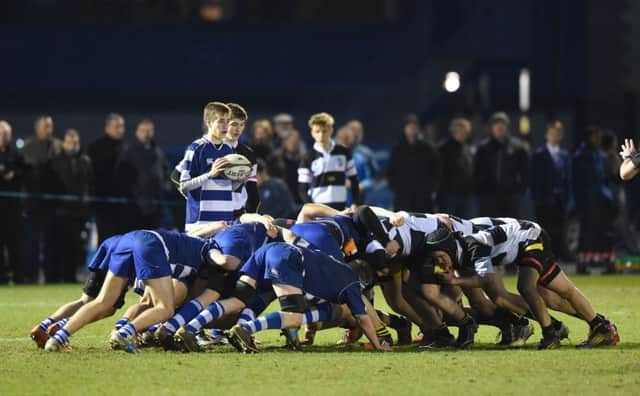Simon Taylor: Giving young rugby players something to play for


The idea behind them is to provide a competitive, graded league structure for junior rugby across Scotland. But, perhaps more importantly, they are also designed to increase participation across the age grades within schools and clubs. Essentially, these are “whole school/club” competitions. So, as well as being awarded points in the usual way for winning matches, each of the five year groups, from S1 up to under 18, contributes to their school or club’s league standing simply by fielding a team each week.
Each conference contains schools/clubs of roughly similar rugby abilities, as well as comparable playing numbers. So some conferences will have schools who can field at least two teams at every age level, whilst in others the requirement is just one. It is worth taking a moment to look at the schools and youth section of the SRU website to get a handle on exactly how the system works. It seems slightly complicated at first glance, but after a couple of minutes navigating from conference to conference, even I got the drift. Still, it must have taken months of head-scratching by the SRU and the whole of the youth and schools rugby fraternity to boil things down into a workable framework, and then a massive effort by coaches, teachers and administrators on the ground to get the thing up and running.
Advertisement
Hide AdAdvertisement
Hide AdNo doubt there will have been teething problems in this first year, and I am aware there were, and possibly still are, objections from some quarters. I am not involved day to day with youth rugby so can’t really comment on the merits of the arguments for and against. I can only speak from what I know, and it seems to me that my own development would have been accelerated by having that extra edge of competition throughout my school years. All kids want to win but, in my day, with a fixture list of matches played in isolation, there was no real bigger picture to a season. Short of going undefeated for the year, or a cherished mention in the school magazine, overall goals were a little vague.
The recent World Cup was a good time for a retired player to come over slightly wistful and to dust off his own variant of the “Coulda been a contender” speech for the umpteenth time.
Watching near-contemporaries like Richie McCaw and Paul O’Connell still operating at the top of the sport did get me wondering whether playing in more “must win” games from an early age might have given me some extra mental ballast further down the line. A decent example of the kind of exposure to pressure a league structure allows came in the deciding fixture of one of the Schools Conferences at the weekend. Ultimately, the winning of the entire Conference came down to the same decision Chris Robshaw had to make against Wales. And as in England’s case, the call to kick for the corner didn’t work out. The defeated team are no doubt still feeling it, but in terms of the greater good, as a rugby nation lesson we would prefer these lessons to be learned at 17 rather than in the decisive game of a home World Cup. But the aim of the Conferences is to make every match feel important, not just those at the top end. This “whole school/club” aspect seems to be one of the biggest successes. Because each year group counts towards overall league standings, the older boys will support the younger teams and keep an eye on their results, and vice versa. This may even create rivalry between the year groups to see who can get the better results, and provides the added motivation of not letting the other sides down. That sort of thing can only strengthen an existing rugby culture.
Strong, competitive programmes have long existed in many schools and clubs across Scotland, and there may be some who see this as an adjunct to what was already in place. It is certainly hard to see how it can do any harm. For other schools and clubs, however, the Conferences may provide a spur to increase playing numbers and provide opportunities at every age grade. And once those extra numbers are in place, there is the focus of a structured competition to keep them interested and push them on.
Youngsters are surely more likely to want to work at their individual skills and strength and conditioning when their club or school’s place in the overall standings is always at stake. The SRU has also undertaken to publish every single result, from every age grade, on their website, and knowing that their results will be made public can only be a huge motivating factor for your average 14 year old.
The feedback I have seen gives the impression that the SRU hasn’t done too badly in matching teams of roughly similar strengths. This is another important consideration, as neither side gets much out of a mismatch, always a risk at junior level. A final aspect of the system which makes practical sense is that the Conferences are almost all finished before Christmas. That means the games can largely be played in decent weather and on dry pitches, as well as allowing time in the season for the Cup, traditional fixtures and further player development.
I am entirely on the outside looking in when it comes to the new set-up and I am prepared to be shot down for saying it, but the Conferences seem like a very positive step for junior rugby. And from a selfish point of view, I wish they had been around when I was a lad.